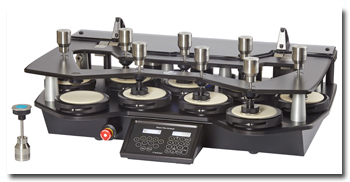CARY, N.C. — May 29, 2014 — INDA, the Association of the Nonwoven Fabrics Industry, has purchased the INSIGHT International Conference from Marketing Technology Service, Inc. (MTS) and will combine the long-standing event with its VISION Consumer Products Conference. Both events have focused on the absorbent product and disposable hygiene market segments.
The combined INSIGHT + VISION conference will be the largest of its kind in the industry and deliver greater value to attendees and exhibitors. The event is expected to draw attendees from around the world with an interest in buying, supplying or manufacturing absorbent products, high-performance fabrics and nonwovens in consumer products. It will continue to feature high-level business and technical presentations, networking opportunities, social events, tabletop exhibitions and award recognitions.
The acquisition, approved by the INDA Executive Committee and its Board of Directors, closed on May 29. Terms were not disclosed. Based in Kalamazoo, Michigan, MTS will continue to operate its other lines of business, including other nonwovens conference events, airlaid production facilities, consulting, testing equipment, product and material testing, market research and publishing, which are not part of the sale.
Jim Hanson, Director of MTS, commented, “I started INSIGHT in 1979 and it has been held every fall since then at many locations in North America. It’s had a consistent following of senior-level international delegates that we consider to also be our friends. So, as we organize and look forward to INSIGHT 2014, we won’t be saying goodbye to the industry — just shifting our focus. MTS will continue to sponsor Executive Short Courses and Absorbent Product Design Symposiums in Michigan, as well as continuing its Nonwovens Technology and other absorbent product conferences located outside of the Americas.”
“We will operate our final MTS INSIGHT this Oct. 19 to 23 in Indianapolis. As INDA merges its VISION conference with INSIGHT, starting October, 2015, I encourage our loyal following to support this new consolidated industry event. I look forward to INSIGHT + VISION advancing the interests of those in the absorbent products and disposable hygiene space.”
INDA President Dave Rousse added, “INSIGHT is a well-established, long-running event primarily serving the absorbent hygiene market, as is our own VISION conference. We are delighted to be able to combine these two respected industry events to create a single, larger and more impactful conference that streamlines the event calendar, consolidates attendee travel dollars, and better serves our members and the industry.”
INDA’s acquisition of INSIGHT has a significant impact on the event calendar for nonwovens and hygiene products overall. Below is a summary of these changes in the 2014-2015 time frame:
- INSIGHT 2014 will take place as scheduled in Indianapolis, IN on Oct. 19-22 and will be organized by Jim Hanson and MTS, as previously planned; there will be no change to that event this year and INDA will provide promotional support.
- INDA’s VISION 2015 Conference, currently scheduled in Miami, FL, Feb. 9-12, will be moved to the Oct. 26-30, 2015 time slot in St. Petersburg, FL and combined with INSIGHT.
- INDA’s growing RISE (Research, Innovation, and Science for Engineered Fabrics) Conference currently scheduled for this Sept. 8-11 in Atlanta, GA will be moved to the VISION calendar slot and held Feb. 9-12, 2015 in Miami, FL.
Rousse added, “These are major changes to the industry event calendar that we believe will simplify and enhance the value of both VISION + INSIGHT and RISE. We encourage support of this year’s INSIGHT event in October, and added support for the movement of RISE out of a crowded fall slot into its own space in 2015. Once settled, we believe this sequencing of events offers a better value to the industry we serve.”
Posted June 3, 2014
Source: INDA





